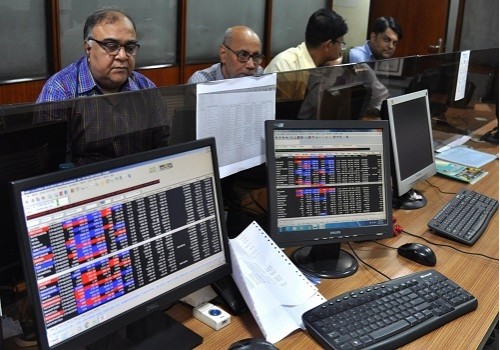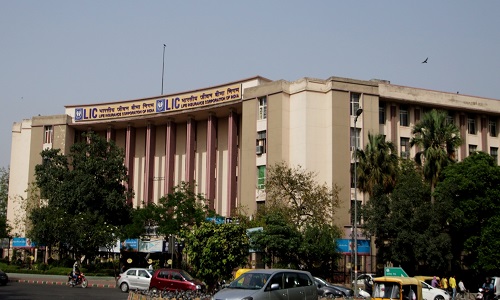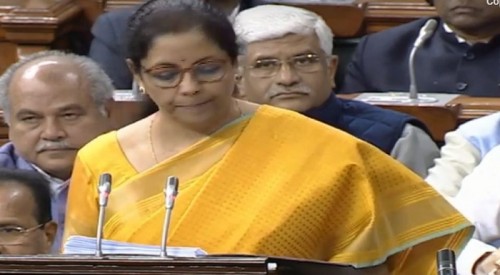Views On Fixed Income - Mr. Pankaj Pathak

Follow us Now on Telegram ! Get daily 10 - 12 important updates on Business, Finance and Investment. Join our Telegram Channel
https://t.me/InvestmentGuruIndiacom
Download Telegram App before Joining the Channel
Below is the Views On Fixed Income By Pankaj Pathak, Fund Manager Fixed Income, Quantum Mutual Fund
Indian Bond markets had a rough patch in the last month. It faced two major negative shocks – (1) Sharp jump in crude oil prices following a drone attack in the Saudi Arabia’s oil facility affecting over 5% of global oil supply and (2) Reduction in corporate tax rate leading to substantial shortfall in the government’s tax revenues.
The Saudi Aramco was quick to respond and performed better than market expectation in restoring the oil production.The latest report suggests that the production is now back to normal levels. The Crude Oil prices which had jumped to USD 72/barrel post the attack retraced back to pre-attack levels of near USD 60 per barrel by the month end.
On the fiscal front though situation remained uncertain as conflicting news reports kept investors perplexed about government’s fiscal objectives. Remember the government has reduced the corporate tax rates from ~35% to ~25% for all companies and to ~17% for new manufacturing companies. Although this was a big confidence booster for the corporate India and will potentially help revive private investments; it will compound the government’s fiscal problems.
In fiscal year 2019, (April 2018 -March 2019), the government revenues had fallen short of its estimates by 0.9% of GDP, but through some expenditure cuts and by shifting some expenditure onto to the books of quasi-sovereign entities, the government managed to show the fiscal deficit unchanged at 3.4% of GDP.
The assumptions for Fiscal year 2020 (April 2019-March 2020) was already very ambitious, with tax revenues slated to grow at 24%. In a year where nominal GDP growth is down below 10%, there was anyways expectation of a serious shortfall in tax revenues from all segments: corporate, personal and indirect taxes.
The government announced that the recent cut in corporate taxes will cost the exchequer INR 1.45 trillion (0.7% of GDP). We estimate the overall gross tax revenue shortfall to be 1.3% of GDP in FY 20. Adjusting for tax cut to be borne by the states and the one-time windfall from the RBI, the net shortfall in fiscal accounts for the central government will be around 0.9% of GDP. That would mean significant expenditure cuts if they intend to meet the fiscal deficit target of 3.3% of GDP. The government has budgeted for over 20% increase in its revenue expenditure in FY20 thus have some headroom to cut spending.
The government can also let the public sector companies to borrow more from market but attempts to shift expenditure on to the books of quasi-sovereign entities are seen through by the bond markets. Thus the 10 year bond yield term premium to the Repo Rate has remained way above average levels and the economy has not benefitted despite aggressive rate cuts and the excess liquidity that the RBI has maintained.
On this backdrop, bond yields across the curve moved up during most part of the month. The benchmark 10 year government bond yield hardened from 6.56% at August end to cross 6.85% after the tax cut announcement. However it retraced back to 6.6% ahead of the monetary policy announcement.
The Monetary Policy Committee (MPC) of the RBI once again reduced the policy rates by 25 bps. This is a fifth consecutive rate cut with which the policy repo rate has been brought down by cumulative 135 bps from 6.5% to 5.15%.
This policy decision was broadly in line with the market expectations though I find 25bps cut to be inadequate given the sharp downward revision in growth forecast. The RBI revised down its GDP growth forecast for FY20 from 6.9% to 6.1% noting weak domestic and external demand conditions and global uncertainties. While they did acknowledge that “the continuing slowdown warrants intensified efforts to restore the growth momentum”.
The MPC also reinforced its accommodative policy stance and quoted “….to continue with an accommodative stance as long as it is necessary to revive growth, while ensuring that inflation remains within the target”.
Despite a rate cut and a dovish statement, the bond market was disappointed as there was some hope of deeper rate cut in this policy itself and much more aggressive tone from the Governor. The 10 year bond yield jumped over 9 basis points to 6.69% after the policy announcement.
Given the current growth inflation dynamics there is still some more room for rate cuts which will continue to support bond markets. But there is a real risk that the government may announce additional market borrowings which could push bond yields higher.
At current levels, long maturity bonds are valued at attractive levels and pricing for most of the fiscal risks. Thus we maintain our positive stance on the bond markets though the future trajectory could be extremely volatile. Investors in bond funds should keep the above mentioned risks in mind while trying to benefit from the falling bond yields.
We would also like to remind investors that an interest rates and in turn bond fund returns might be very volatile in shorter time period. Thus investors should keep atleast 2-3 years’ time horizon while allocating to bond funds.
Dynamic Bond Funds, which allow the fund manager the flexibility to change the portfolio positioning depending on the emerging situation is a better alternative if you wish to allocate to bond funds and can tolerate the near term volatility in NAV.
Investors with low risk appetite should stick to Liquid Funds to avoid any sharp volatility in their portfolio value. However, while choosing such funds also one should be aware of the credit risk and prefer funds which take low credit and liquidity risks.
Investors should also note that the credit crisis which began in the bond markets post IL&FS Default is not over yet and investors should remain cautious and should always choose debt and liquid funds which priorities safety and liquidity over returns in the current times.
Above views are of the author and not of the website kindly read disclaimer










Tag News

We anticipate immense potential benefits from the upcoming Sovereign Gold Bond Tranche in FY...



More News

Webinar Summary: Investing in a bull run. Where to from here ? by Nilesh Shetty, Quantum AMC








